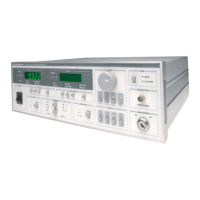REMOTE OPERATION
ANSI/IEEE-488.2 Definitions
10_15 LDC-3900 Series 39
CHAPTER 3
on page 61. These syntax diagrams conform to the ANSI/IEEE-488.2-1987
standard, and the terminology presented here reflects that standard.
The oval (or round) shape contains a terminal syntactic element. These represent
a basic function, such as a single ASCII character, which cannot be divided.
Rectangles contain non-terminal syntactic elements. These represent elements
which are expandable to a diagram of terminal syntactic elements. However, they
are presented as a unit for clarity or emphasis.
Lines and arrows indicate correct paths through the syntax diagram. A reverse
line around an element indicates that the element may be repeated indefinitely. A
forward arrow around an element indicates that the element may be omitted.
White Space
White space is defined by the syntactic diagram shown in Figure 3.1 on page 40,
where <white space character> is defined as a single ASCII-encoded byte in the
range 00-09, 0B-20 (0-9, 11-32 decimal). This range includes the ASCII control
characters, carriage return, and the space, but excludes the new line character.
In most practical programming situations, the space character (space bar) would
be used as white space. White space is generally used for separating other

